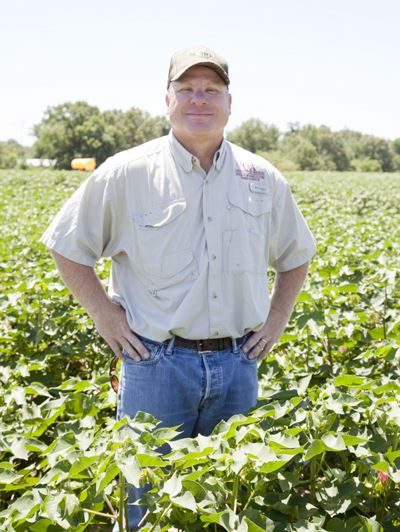Focus On Residuals
Farmers Gaining Ground With Game Plan To Fight Resistance
BETTY VALLE GEGG-NAEGER
MidAmerica Farmer Grower
MILAN, TENN.
Weed control in cotton gained attention from Dr. Tom Barber, Arkansas Extension Cotton Agronomist, recently.
“The last five years when we talk about cotton weed control our
programs have mainly focused on glyphosate-resistant Palmer pigweed,
(Palmer amaranth); if we control it, we control most other weeds as
well,” he said.
It was 2006 when the first population of glyphosate-resistant Palmer
amaranth in Arkansas was found. Since then, farmers soon realized the
mess they have on their hands.
“Once we realized what we were dealing with and how widespread the
problem was, we had a producer meeting in the fall of 2010 where 800
people attended,” Barber said. “It was called the Pig Posium and it
pretty much marked a turning point for growers and consultants. They
began to pay more attention to pigweed and began making a game plan for
the next season to get hold of Palmer pigweed on their farm.
Looking at the 2012, 2013 and 2014 seasons, it seems that even though
there still is a pigweed problem, farmers are gaining ground with some
of the herbicide and zero-tolerance programs they’re using now.
Herbicide applications are being applied in a more timely fashion and
growers are rotating herbicide chemistry that provide broad spectrum
weed control.
“We’re using residuals, we’re overlapping residuals in a lot of cases
which is a good thing, and we’re preventing the pigweed from emerging,”
Barber noted. “Looking at a year like 2014, we’ve had so much rainfall,
almost 40 inches in some areas of Arkansas since the first of January.
With that much rainfall, it’s hard to maintain a good weed control
program because your residual herbicides will break and new flushes of
pigweed will emerge. The Arkansas growers have decided to look at new
technologies like LibertyLink or Glytol LibertyLink technology this
year, and they seem to be doing a really good job of managing our
pigweed populations in that technology.”

Dr. Tom Barber, Arkansas Extension Cotton Agronomist discussed weed control in cotton, focusing on
glyphosate-resistant Palmer pigweed stating that if we can control it we can control most other weeds.
Photo by John LaRose, Jr.
Barber focused on how best to use Liberty and continue to use
residuals in that cotton system, regardless of whether they have an
over-the-top option like Liberty.
“Liberty is a peculiar herbicide because it won’t always give you the
same activity,” he said. “For instance when temperatures drop much past
65 degrees, we get less activity from Liberty versus when it’s 80.
Sometimes when we spray it early in the mornings or late in the evenings
we don’t get as good activity as when we spray it in the middle of the
day, so we’re hammering some of those points home today.”
He discussed making good applications, using plenty of water, at
least 15 gpa for over-the-top applications for pigweed control. Pigweed
doesn’t need to be taller than six inches, and five inches or less is
preferred for optimal control of pigweed.
“Again this year, we’ve had a lot of rain so we’ve had some cases
where pigweed has gotten taller than we want it to, and we couldn’t get
back in the field and spray. With the Glytol LibertyLink technology, we
can go in there with Liberty and Roundup, tank mix those two, and even
throw a residual like Dual in there, so we have a three-way herbicide
mix. We can spray that one time, and come back within 10 days with a
Liberty application to clean up. Even on bigger pigweed, although not
ideal, we can manage that situation in the Glytol LibertyLink technology
and in that system. We’re using the new technologies and growers are
recognizing we need another answer to this pigweed problem,” Barber
summed. ∆
BETTY VALLE GEGG-NAEGER: Senior Staff Writer, MidAmerica Farmer Grower